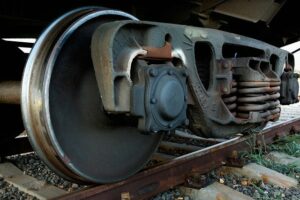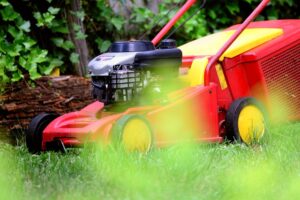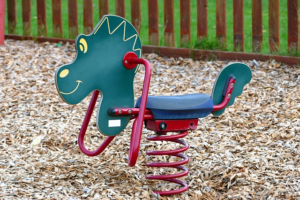The spring force is a fundamental concept in physics that is encountered in various everyday situations. Springs are elastic objects that can be stretched or compressed, and they exert a force that is proportional to the displacement from their equilibrium position. This force can be observed in numerous examples, such as the suspension system of a car, the recoil of a firearm, the operation of a pogo stick, and even the bouncing of a basketball. Understanding the principles behind the spring force is crucial for comprehending the behavior of objects in motion and the mechanics of various mechanical systems. In this article, we will explore some common examples of spring force and delve into the underlying principles that govern their behavior. So, let’s dive in and explore the fascinating world of spring forces!
Key Takeaways

- The spring force is a restoring force that acts on an object when it is stretched or compressed.
- Examples of spring force include a spring in a mattress, a door hinge, and a trampoline.
- The magnitude of the spring force is directly proportional to the displacement of the object from its equilibrium position.
- The spring force follows Hooke’s Law, which states that the force is equal to the spring constant multiplied by the displacement.
Forces Acting on a Spring
A spring is a flexible object that can store and release mechanical energy. When a force is applied to a spring, it undergoes deformation, either compression or extension, depending on the direction of the force. In this section, we will explore the forces acting on a spring and understand how it behaves under different circumstances.
Overview of the forces acting on a spring
When a force is applied to a spring, it exerts a counterforce known as the spring force. This force is responsible for the spring’s ability to compress or extend. The spring force is governed by Hooke’s law, which states that the force exerted by a spring is directly proportional to the displacement of the spring from its equilibrium position.
There are two main forces acting on a spring: the restoring force and the external force. The restoring force is the force exerted by the spring to return to its equilibrium position. It is always directed opposite to the displacement of the spring. The external force, on the other hand, is the force applied to the spring from an external source. It can be in any direction and magnitude.
Explanation of compression and restoration of a spring
When a spring is compressed, it is being pushed together, reducing its length. This compression causes the spring to exert a restoring force in the opposite direction. The restoring force increases as the compression of the spring increases. Once the external force is removed, the spring will return to its original shape due to the restoring force.
On the other hand, when a spring is extended, it is being pulled apart, increasing its length. Similar to compression, the spring exerts a restoring force in the opposite direction of the extension. The restoring force increases as the extension of the spring increases. Once the external force is removed, the spring will return to its original shape.
The rate at which a spring compresses or extends is determined by its spring constant. The spring constant is a measure of the stiffness of the spring and is denoted by the letter “k”. A higher spring constant means a stiffer spring that requires more force to compress or extend. Conversely, a lower spring constant indicates a more flexible spring that requires less force.
| Forces Acting on a Spring |
|---|
| – Restoring force |
| – External force |
| – Compression |
| – Extension |
| – Hooke’s law |
| – Spring constant |
| – Spring deformation |
| – Equilibrium position |
In the next section, we will delve deeper into the concept of spring compression and extension, exploring their applications and significance in various fields.
Example of Air Spring Force
Explanation of Air Spring Force

Air spring force is a type of spring force that utilizes compressed air to provide a cushioning effect and support loads. It is commonly used in various applications, including vehicles and machinery, where it offers several advantages over traditional mechanical springs. Let’s take a closer look at how air spring force works and its applications.
When air is compressed within a flexible container, such as a rubber bladder or an airbag, it exerts a force in all directions. This force is known as air spring force. The air inside the container acts like a spring, providing resistance and absorbing shocks or vibrations.
The principle behind air spring force is similar to that of a regular mechanical spring. However, instead of using a coiled metal spring, air spring force utilizes compressed air to achieve the desired effect. This makes it more versatile and adaptable to different situations.
Application of Air Spring Force in Vehicles and Machinery
Air spring force finds extensive use in vehicles and machinery, particularly in suspension systems. Here are a few examples of how air spring force is applied in these contexts:
-
Vehicle Suspension: Air spring force is commonly used in vehicle suspension systems to provide a smooth and comfortable ride. By adjusting the air pressure in the air springs, the suspension can be fine-tuned to accommodate varying loads and road conditions. This helps improve stability, handling, and overall ride quality.
-
Heavy-Duty Trucks: Air spring force is especially beneficial in heavy-duty trucks that carry heavy loads. By distributing the weight evenly and absorbing shocks, air springs help maintain a level ride height and reduce the strain on the vehicle‘s chassis. This improves safety, stability, and extends the lifespan of the truck.
-
Construction and Agricultural Machinery: Air spring force is also utilized in construction and agricultural machinery, such as loaders, excavators, and tractors. These machines often operate in rough terrains and encounter significant vibrations. Air springs help dampen these vibrations, reducing operator fatigue and improving overall productivity.
-
Railway Systems: Air spring force is employed in railway systems for various purposes. It is used in the suspension systems of trains to provide a comfortable ride for passengers and protect the cargo from excessive vibrations. Additionally, air springs are also used in railway switches and couplers to ensure smooth and reliable operations.
Examples of Spring Force at Home
Springs are widely used in various household materials to provide functionality and convenience. Let’s explore some examples of how spring force is utilized in everyday objects.
Explanation of Various Household Materials that Utilize Spring Force
Springs are flexible objects that can be stretched or compressed. They store potential energy when deformed and release it when returning to their original shape. This property of springs is harnessed in many household items to perform specific tasks.
Furniture

Have you ever wondered how your recliner chair or sofa can be adjusted to different positions? The answer lies in the springs integrated into the furniture. These springs allow the furniture to be easily reclined or adjusted to provide maximum comfort. The spring force helps maintain the desired position and ensures that the furniture stays in place.
Clocks
Clocks are an essential part of our daily lives, and springs play a crucial role in their functioning. In mechanical clocks, a coiled spring called a mainspring is used to store energy. As the mainspring unwinds, it releases the stored energy, which is then transferred to the clock’s gears, causing them to move and keep time. The spring force ensures that the clock’s mechanism operates smoothly and accurately.
Light Switches
Ever wondered how light switches work? Behind the switch plate, there is a small spring that provides the necessary force to turn the lights on or off. When you press the switch, the spring compresses, and when you release it, the spring expands, completing the circuit and allowing the flow of electricity. The spring force in light switches ensures that they return to their original position after being pressed.
Wristwatches
Wristwatches are not just fashionable accessories; they also rely on spring force to function. In mechanical watches, a tiny spring called a mainspring is wound manually or automatically. As the mainspring unwinds, it releases energy, which is transferred through a series of gears to power the watch‘s hands and other functions. The spring force ensures that the watch keeps accurate time.
Examples Include Furniture, Clocks, Light Switches, and Wristwatches
To summarize, spring force is utilized in various household materials to provide functionality and convenience. Here are some examples:
- Furniture: Recliner chairs and sofas use springs to allow for easy adjustment and to maintain desired positions.
- Clocks: Mechanical clocks rely on springs to store and release energy, powering the clock’s gears and ensuring accurate timekeeping.
- Light Switches: Springs in light switches provide the necessary force to turn lights on or off and return the switch to its original position.
- Wristwatches: Mechanical wristwatches use springs to power their hands and other functions, ensuring accurate timekeeping.
These examples demonstrate how spring force is harnessed in everyday household items, making our lives more comfortable and efficient. Next time you use any of these objects, take a moment to appreciate the role springs play in their functionality.
How Does Spring Force Work?
Springs are fascinating objects that can be found in various applications, from everyday objects to complex machines. They play a crucial role in many systems, providing a force that is essential for their proper functioning. In this section, we will delve into the inner workings of spring force and explore its relationship with displacement.
Detailed Explanation of How Spring Force Functions
To understand how spring force works, we need to familiarize ourselves with Hooke’s law. Hooke’s law states that the force exerted by a spring is directly proportional to the displacement or stretch of the spring from its equilibrium position. In simpler terms, the more a spring is stretched or compressed, the greater the force it exerts.
When a spring is at rest, it is in its equilibrium position, where the forces acting on it are balanced. However, when an external force is applied to the spring, it causes a displacement from its equilibrium position. This displacement creates a restoring force within the spring, which acts in the opposite direction to bring the spring back to its equilibrium state.
The restoring force of a spring is what we commonly refer to as spring force. It is this force that allows springs to be used in various applications, such as in suspension systems, engine components, and even everyday objects like latches and sprinklers. By exerting a force in a specific direction, springs can act as a mechanism to maintain stability, provide support, or create motion.
Discussion of the Relationship Between Force and Displacement in a Spring
The relationship between force and displacement in a spring is linear and can be mathematically represented by Hooke’s law equation:
F = k * x
Where:
– F represents the spring force
– k is the spring constant, which is a measure of the stiffness of the spring
– x denotes the displacement or stretch of the spring from its equilibrium position
The spring constant determines how much force is required to stretch or compress a spring by a certain amount. It is a unique property of each spring and is dependent on factors such as the material and geometry of the spring.
By analyzing the equation, we can observe that as the displacement of the spring increases, the force exerted by the spring also increases proportionally. Similarly, if the displacement decreases, the force exerted by the spring decreases accordingly.
It is important to note that Hooke’s law is only valid within the elastic limit of the spring. If the displacement exceeds the elastic limit, the spring may undergo permanent deformation, and Hooke’s law will no longer hold true.
Type of Force: Spring Force
Explanation of Spring Force as a Type of Elastic Force
When it comes to understanding the concept of spring force, it’s important to grasp the idea of elastic forces. Elastic forces are forces that cause an object to deform or change its shape when applied to it. One of the most common examples of an elastic force is the spring force.
The spring force is a force exerted by a spring when it is either compressed or extended. It is also known as the restoring force, as it acts in the opposite direction to the displacement of the spring. This means that when a spring is compressed, it exerts a force to extend back to its original length, and when it is extended, it exerts a force to compress back to its original length.
Springs are elastic objects that can be made from various materials, such as metal or rubber. They are designed to store potential energy when they are deformed and release it when they return to their original shape. This potential energy is known as elastic potential energy.
The spring force can be mathematically described by Hooke’s Law, which states that the force exerted by a spring is directly proportional to the displacement of the spring from its equilibrium position. The equation for Hooke’s Law is F = -kx, where F is the spring force, k is the spring constant (a measure of the stiffness of the spring), and x is the displacement of the spring.
Comparison of Spring Force with Other Types of Forces
Now that we have a basic understanding of spring force, let’s compare it with other types of forces to see how it differs.
-
Gravity: Gravity is a force that attracts objects towards each other. Unlike spring force, which is a restoring force, gravity is a force that acts in a single direction, pulling objects downwards towards the Earth’s center. Gravity is responsible for keeping us grounded and determining the weight of objects.
-
Friction: Friction is a force that opposes the motion of objects when they are in contact with each other. While spring force is related to the deformation of an object, friction is related to the interaction between two surfaces. Friction can either be static (when the object is at rest) or kinetic (when the object is in motion).
-
Electromagnetic Force: Electromagnetic force is a fundamental force that governs the interactions between charged particles. It is responsible for holding atoms and molecules together, as well as for the behavior of magnets. Unlike spring force, which is a mechanical force, electromagnetic force is related to the interaction between charged particles.
-
Tension Force: Tension force is a force that is transmitted through a string, rope, or cable when it is pulled tight. It is similar to spring force in the sense that it is a restoring force, but it acts in a different direction. Tension force always acts along the length of the string or cable, whereas spring force acts in the opposite direction to the displacement of the spring.
By comparing spring force with other types of forces, we can see that it has unique characteristics that make it useful in various applications. From spring balances to suspension systems in cars, springs play a crucial role in maintaining equilibrium, providing support, and exerting forces in different directions. Whether it’s the cord in a window blind, the suspension system in a car, or the spring in a sprinkler, spring force is a fundamental concept in physics that helps us understand and explain the behavior of objects in our everyday lives.
Examples of Elastic Spring Force
Elastic spring force is a fascinating concept that can be observed in various everyday objects and activities. In this section, we will explore some interesting examples that demonstrate the principles of elastic spring force.
Overview of Various Examples of Elastic Spring Force
Elastic spring force is a type of force exerted by a stretched or compressed elastic material, such as a spring. This force is proportional to the displacement of the material from its equilibrium position. When the material is stretched or compressed, it exerts a force in the opposite direction, trying to return to its original shape.
Understanding the examples of elastic spring force can help us grasp the significance of this force in our daily lives and its applications in different fields.
Examples Include Trampolines, Pogo Sticks, and Bungee Cords
Trampolines



Trampolines are a classic example of elastic spring force in action. When you jump on a trampoline, the springs underneath the jumping surface stretch and store potential energy. As you land on the trampoline, the springs release this stored energy, propelling you upwards. The force exerted by the springs helps you bounce higher and enjoy the exhilarating feeling of weightlessness.
Pogo Sticks

Pogo sticks are another fun example of elastic spring force. These devices consist of a metal spring attached to a handle and a footrest. When you jump on a pogo stick, the spring compresses, storing potential energy. As you push down on the footrest, the compressed spring expands, releasing the stored energy and propelling you upwards. The elastic spring force enables you to bounce and maintain balance on the pogo stick.
Bungee Cords

Bungee cords are commonly used for securing items during transportation or for recreational purposes. These cords are made of elastic materials, such as rubber or latex, which exhibit elastic spring force. When you stretch a bungee cord, it stores potential energy. This stored energy can be used to secure objects tightly or to create thrilling experiences, such as bungee jumping. The elastic spring force of the bungee cord ensures a controlled and safe descent during the jump.
In this section, we explored various examples of elastic spring force, including trampolines, pogo sticks, and bungee cords. These examples demonstrate how elastic materials can store and release potential energy, resulting in exciting and useful applications. Understanding the principles of elastic spring force allows us to appreciate the role it plays in our daily lives and the world around us.
Examples of Spring Force in Daily Life
Springs are everywhere around us, playing a crucial role in various applications. From the suspension system in automobiles to electronic appliances and gym tools, spring force is utilized in numerous ways to provide stability, support, and controlled movement. Let’s explore some everyday examples where spring force is at work.
Discussion of Everyday Applications of Spring Force
Springs are versatile devices that can be found in many objects we encounter on a daily basis. They are designed to store and release energy, exerting a force that allows them to perform specific functions. Here are a few examples of how spring force is applied in different contexts:
-
Automobiles Suspension System: The suspension system of a car relies heavily on springs to provide a smooth and comfortable ride. Springs, often in the form of coil springs, are strategically placed between the vehicle‘s frame and the wheels. They act as shock absorbers, dampening the impact of bumps and uneven surfaces. By compressing and extending, the springs help maintain contact between the tires and the road, ensuring stability and control.
-
Electronic Appliances: Springs are commonly used in various electronic devices to enhance functionality and safety. For instance, in a retractable cord of a vacuum cleaner or a power tool, a coiled spring is employed to exert a force that pulls the cord back into the device when released. This feature not only keeps the cord organized but also prevents it from tangling or getting damaged.
-
Gym Tools: Springs are an integral part of many gym tools and equipment. Take, for example, a treadmill. The running surface is often supported by springs that help absorb the impact of each step, reducing strain on the user‘s joints. Similarly, exercise machines like resistance bands and cable machines utilize springs to provide varying levels of resistance, allowing individuals to target specific muscle groups effectively.
Examples Include Automobiles Suspension System, Electronic Appliances, and Gym Tools

Let’s delve deeper into some specific examples of how spring force is utilized in everyday objects:
-
Automobiles Suspension System: As mentioned earlier, the suspension system in cars relies on springs to maintain stability and control. By absorbing shocks and vibrations, springs ensure a comfortable ride for passengers. Whether it’s a coil spring or a leaf spring, these components work together to provide the necessary support and flexibility required for a smooth driving experience.
-
Electronic Appliances: Springs find their way into various electronic appliances, making them more user-friendly and efficient. In addition to retractable cords, springs are used in devices like door latches, ensuring they close securely and remain in place. Springs are also present in sprinkler systems, where they provide the force needed to retract the sprinkler head after use.
-
Gym Tools: Springs play a vital role in many gym tools, aiding in resistance and controlled movement. For instance, a jump rope relies on the elasticity of the cord, which acts as a spring, to provide the necessary force for jumping. Similarly, exercise equipment like resistance bands and suspension trainers utilize springs to create tension and resistance, enabling users to build strength and improve their fitness levels.
Two Examples of Spring Force
Springs are widely used in various applications to provide force and motion. They are elastic objects that can be compressed, extended, or twisted, and they exert a force in response to these deformations. In this section, we will explore two specific examples of spring force: valve springs and lawn mowers.
Valve Springs


Valve springs are an essential component of internal combustion engines. They play a crucial role in controlling the opening and closing of the engine‘s valves. These springs are typically made of steel and are designed to withstand high temperatures and pressures.
How Valve Springs Work
Valve springs work based on the principle of Hooke’s law, which states that the force exerted by a spring is directly proportional to the displacement or deformation it undergoes. In the case of valve springs, this deformation occurs when the camshaft pushes down on the valve stem, compressing the spring.
Function of Valve Springs
Valve springs ensure that the valves close tightly and open at the right time during the engine‘s operation. When the camshaft rotates, it pushes down on the valve stem, compressing the valve spring. This compression stores potential energy in the spring, which is released when the camshaft moves away, allowing the valve to open.
Importance of Valve Springs
Valve springs are crucial for maintaining the engine‘s performance and efficiency. They ensure that the valves close tightly, preventing any leakage of combustion gases. Additionally, they help maintain the engine‘s timing and prevent valve float, which can lead to engine damage.
Lawn Mowers

Lawn mowers are commonly used to maintain the grass in gardens and lawns. They rely on spring force to operate efficiently and provide the necessary cutting power.
Spring Force in Lawn Mowers
Lawn mowers utilize springs in various ways to perform their functions effectively. One example is the recoil starter mechanism, which uses a spring to store and release energy to start the engine. When the user pulls the starter cord, the spring is compressed. As the cord is released, the spring rapidly extends, rotating the engine‘s crankshaft and starting the mower.
Suspension Springs in Lawn Mowers
Another example of spring force in lawn mowers is the suspension system. Many modern lawn mowers have a suspension system that uses springs to provide a smoother ride and better maneuverability. These springs absorb the shocks and vibrations caused by uneven terrain, ensuring that the mower‘s cutting deck remains level and in contact with the ground.
Benefits of Spring Force in Lawn Mowers
The use of springs in lawn mowers provides several benefits. The recoil starter mechanism allows for easy and convenient engine starting, while the suspension system improves the mower‘s performance on uneven surfaces. By absorbing shocks and vibrations, the springs help maintain the stability and balance of the mower, resulting in a cleaner and more precise cut.
Why Is Spring Force Negative?
When studying the concept of spring force, one may come across the notion that it is often represented as a negative value. This negative sign in spring force equations plays a crucial role in understanding the behavior of springs and their interaction with other objects. Let’s delve into the explanation of this negative sign and discuss the direction of force in relation to displacement.
Explanation of the Negative Sign in Spring Force Equations
The negative sign in spring force equations arises from the application of Hooke’s law, which states that the force exerted by a spring is directly proportional to the displacement of the spring from its equilibrium position. Mathematically, this can be expressed as:
F = -kx
Here, F represents the spring force, k is the spring constant, and x denotes the displacement from the equilibrium position. The negative sign indicates that the force exerted by the spring is in the opposite direction of the displacement.
To understand why the negative sign is necessary, let’s consider a simple example. Imagine a spring attached to a wall, with one end connected to a block. When the block is pulled away from the wall, the spring stretches, creating a restoring force that tries to bring the block back to its original position.
If we were to remove the negative sign from the equation, the force would be positive, implying that the spring is pushing the block away from the wall. However, in reality, the spring force acts in the opposite direction, pulling the block towards the wall. By including the negative sign, we accurately represent this behavior.
Discussion of the Direction of Force in Relation to Displacement
Now that we understand the significance of the negative sign, let’s explore the direction of the spring force in relation to displacement. When a spring is compressed or extended, it exerts a force that aims to restore it to its equilibrium position.
When the displacement is positive (i.e., the spring is stretched), the spring force acts in the negative direction. Conversely, when the displacement is negative (i.e., the spring is compressed), the spring force acts in the positive direction. This relationship ensures that the spring always exerts a force that opposes the displacement, attempting to bring the system back to its equilibrium state.
To visualize this concept, imagine a spring hanging vertically with a mass attached to its lower end. When the mass is pulled downwards, the spring stretches, and the force exerted by the spring acts upwards, opposing the displacement. Similarly, when the mass is pushed upwards, compressing the spring, the spring force acts downwards, again opposing the displacement.
| Positive Displacement | Negative Displacement |
|---|---|
| Spring is stretched | Spring is compressed |
| Spring force acts in the negative direction | Spring force acts in the positive direction |
| Force opposes the displacement | Force opposes the displacement |
Understanding the negative sign and the direction of spring force is fundamental in fields such as physics and engineering, where springs are used in a wide range of applications. Whether it’s in the suspension system of a vehicle, the mechanism that maintains tension in a cord, or even the force exerted by a spring-loaded latch, the principles of spring force play a crucial role in ensuring the proper functioning of these systems.
Example of Spring Force in Science: Material and Compression
Explanation of the Relationship between Material and Spring Force
When it comes to understanding the concept of spring force, it is important to consider the role of the material from which the spring is made. The material of a spring plays a significant role in determining its strength and elasticity, which in turn affects the amount of force it can exert.
Different materials have varying levels of stiffness and flexibility. For example, a steel spring is known for its high stiffness, while a rubber band exhibits more flexibility. The stiffness of a spring is often quantified by its spring constant, which represents the force required to stretch or compress the spring by a certain amount.
The spring constant is a measure of the material’s resistance to deformation. It determines how much force is needed to stretch or compress the spring. A higher spring constant indicates a stiffer spring that requires more force to deform, while a lower spring constant indicates a more flexible spring that requires less force.
For instance, if we compare a steel spring with a rubber band, the steel spring will have a higher spring constant due to its stiffness. This means that it will require more force to stretch or compress the steel spring compared to the rubber band.
Discussion of the Role of Compression in Spring Force
Compression is another important factor that influences spring force. When a spring is compressed, it stores potential energy in the form of elastic potential energy. This potential energy is directly proportional to the amount of compression applied to the spring.
When a compressed spring is released, it exerts a force in the opposite direction to return to its original shape. This force is known as the restoring force and is a manifestation of the spring force. According to Hooke’s law, the restoring force exerted by a spring is directly proportional to the displacement or compression of the spring.
In simpler terms, the more a spring is compressed, the greater the force it will exert when released. This is why springs are commonly used in various applications where force is required, such as in spring balances, suspension systems, and even everyday objects like latches and sprinklers.
For example, in a car’s suspension system, springs are used to provide a smooth ride by absorbing the impact from bumps and maintaining the height of the vehicle. The compression of the springs allows them to absorb the force exerted on the car’s wheels, providing a more comfortable and stable ride.
What are some examples of the intersection between spring force and electric force?
The concept of spring force, as explained in the article on Lambda Geeks, is related to the force exerted by a spring when it is stretched or compressed. On the other hand, the article on Electric force examples and explanations explores the electric force, which is the force between charged particles. In certain cases, these two forces can interact or influence each other. For example, in an electric motor, the electric force can be used to stretch or compress a spring, resulting in the conversion of electrical energy into mechanical energy. This is just one fascinating example of how spring force and electric force can intersect and create interesting phenomena.
Frequently Asked Questions

What forces act on a spring?
The forces that act on a spring are the spring force and the restoring force.
Example of air spring force?
An example of air spring force is the suspension system in a vehicle, where compressed air is used to provide cushioning and absorb shocks.
Example of spring force at home?
An example of spring force at home is a door hinge, where a spring is used to provide the force needed to close the door.
How does spring force work?
Spring force is a force exerted by a compressed or stretched spring. It follows Hooke’s law, which states that the force is directly proportional to the displacement from the equilibrium position.
What type of force is a spring?
A spring force is an example of an elastic force, which is a type of force that causes a material to deform and then return to its original shape when the force is removed.
Examples of elastic spring force?
Examples of elastic spring force include a trampoline, where the springs provide the bouncing effect, and a pogo stick, where the spring allows for jumping.
Examples of spring force in daily life?
Some examples of spring force in daily life include mattress springs providing support, a retractable pen mechanism, and a clothespin holding clothes on a line.
2 examples of spring force?
Two examples of spring force are a car suspension system, where springs absorb shocks, and a diving board, where springs provide the bouncing effect.
Why is spring force negative?
Spring force can be negative when the spring is compressed, as the displacement from the equilibrium position is negative. This indicates that the spring is exerting a force in the opposite direction.
Example of spring force in science?
An example of spring force in science is the use of a spring balance to measure the weight of an object. The spring stretches or compresses based on the weight, and the force exerted by the spring is used to determine the weight.
Also Read:
- Reflection of light examples
- Actuators examples
- Fixed pulley examples
- Reallife resonance examples everyday faq
- Interference of light examples
- Physical change examples
- Perfectly inelastic collision examples
- Simple harmonic motion examples
- External forces examples
- Double bond examples
I am Keerthi K Murthy, I have completed post graduation in Physics, with the specialization in the field of solid state physics. I have always consider physics as a fundamental subject which is connected to our daily life. Being a science student I enjoy exploring new things in physics. As a writer my goal is to reach the readers with the simplified manner through my articles.